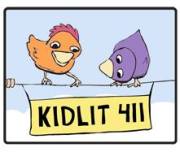14:14 PB ELEMENT Blog Review: PATTERN – Looking at The Wolves are Back by Jean Craighead George
 (This is my #5 post of the 14:14 PB Element Challenge offered by Christie Wild, February 14-28, 2014)
(This is my #5 post of the 14:14 PB Element Challenge offered by Christie Wild, February 14-28, 2014)
Title: The Wolves Are Back
Author: Jean Craighead George
Illustrator: Wendell Minor
Publisher: Dutton Children’s Books
Year: 2008
Words: 785
This book attracted my eye by the cover…a young wolf howling, full evidence in visual (and audible) form of the certainty of the title, “The Wolves Are Back.” Though I couldn’t actually hear the howl, I could see it, and much of the wonderful illustration by Wendell Minor does the same throughout the book to give the reader a visual avenue for hearing, touch, taste and smell.
The most striking story element I have noticed in this book is the use of pattern throughout the text. Author Jean George has ‘punctuated’ her passages of simple, imagery filled descriptions with two repeating phrases. These four-word phrases are like drum rolls that emphasize the meaning and theme of the book. Here’s an excerpt from page one where the pattern begins:
“The wolf pup pricked up his ears, pattered out of the den, and followed his father down the slope. They jogged through the lush grasses to the bank of the Lamar River in Yellowstone National Park. There they came upon the carcass of an elk their pack had felled.
The wolves were back!”
That title phrase provides the spine of the pattern throughout the book, but is given a strong emphasis by a related contrasting phrase that follows each ‘backstory’ passage. George describes times before the wolves returned, and modifies the phrase to relate the stark contrasts of an imbalanced environment.
“Where had they been?
Shot. Every one.
Many years ago…there were no wolves in the forty eight states. No voices howled. The thrilling chorus of the wilderness was silenced.
The wolves were gone.”
The contrasting phrase is repeated as the prior state of growing imbalance is described spread by spread. Eventually the story of the wolves return is told, and with each natural response to more balance in the ecosystem, the crescendo “The wolves were back” is repeated.
Hope returns with the wolves as the pup goes south to find a mate, dig a den, and continue to have their designed effect on the environment. The book concludes, of course, with:
“The wilderness is in balance again.
The wolves are back.”
Contrasting repetition is a simple pattern technique I haven’t noticed before, though I’m sure I’ve seen it used in other non-fiction picture books. Certainly it has been effective in fiction picture books. What comes to mind? Well, in P.D. Eastman’s Go, Dog, Go there’s the famous “Do you like my hat? No I do not!” The contrast (or conflict) in that example is within the repeated phrase.
I am prompted to examine my writing to see if patterns with contrast, either intact within repeated phrases, or as contrasting repeated phrases, could have a positive effect on how my themes are communicated to the reader.
What patterns with contrast have you used in your writing? What are some you have read? Share them here in your comments.








this is a wonderful topic for children to be exposed to, the balance in everything. I recently watched a documentary about reintroducing the wolves to an area and making it healthy again so this book bought that back to the forefront of my memory as I read your descriptions. I am very honoured to be reading your posts each day and seeing the professional way you appraise a book and its elements. Thank you I am learning so much from you.